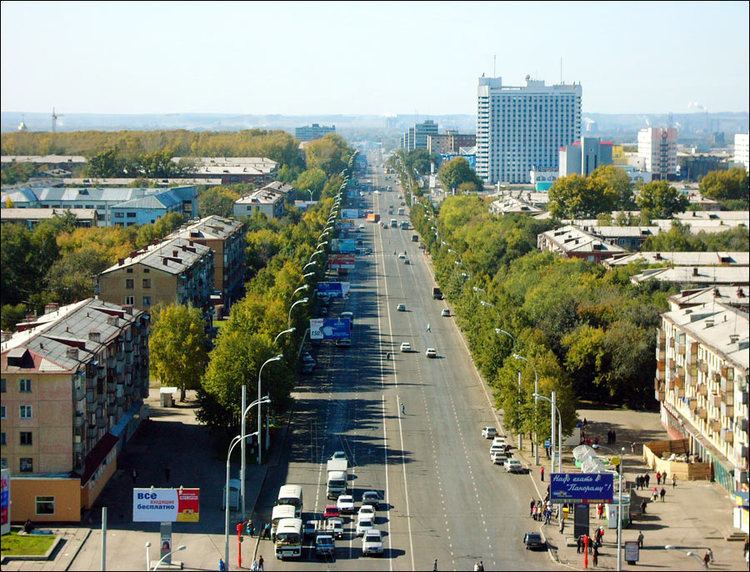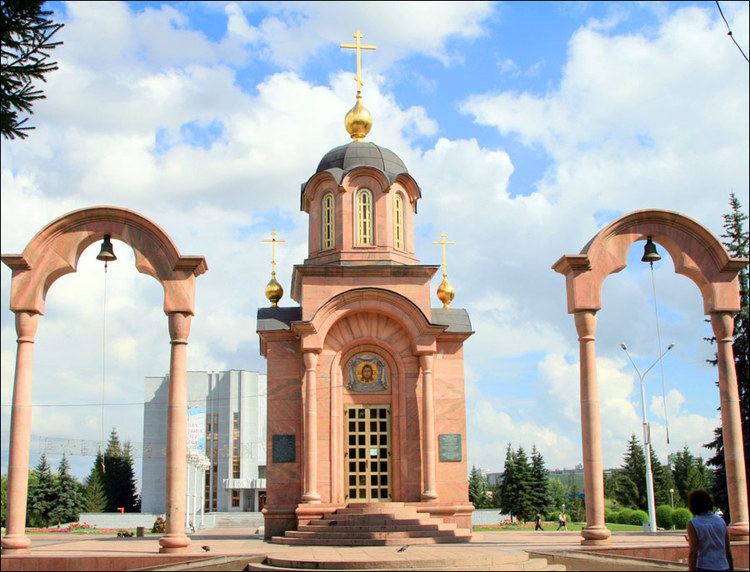Population 532,981 (2010) Mayor V.K. Ermakov | Area 282.3 km² | |
 | ||
Colleges and Universities Kemerovo State University, Kuzbass State Technical University, Kemerovo State Medical Academy | ||
Founded May 9, 1918City emblem with monument to Mikhail Volkov | ||
Map of Kemerovo
Kemerovo (Russian: Кемерово; [ˈkʲemʲɪrəvə]) is an industrial city and the administrative center of Kemerovo Oblast, Russia, located at the confluence of the Iskitim and Tom Rivers, in the major coal mining region of the Kuznetsk Basin. Population: 532,981(2010 Census); 484,754 (2002 Census); 520,263 (1989 Census).
Contents
- Map of Kemerovo
- Russia see the moment a meteor lights up kemerovo sky
- New restaurant at the ajijic pier maria isabel great buffet lunch daily 69 pesos
- History
- Administrative and municipal status
- Economy
- Transportation
- Education
- Sports
- Climate
- Yeti claims
- Notable people
- Twin towns and sister cities
- References

Russia see the moment a meteor lights up kemerovo sky
New restaurant at the ajijic pier maria isabel great buffet lunch daily 69 pesos
History

Kemerovo is an amalgamation of, and successor to, several older Russian settlements. A waypoint named Verkhotomsky ostrog was established nearby in 1657 on a road from Tomsk to Kuznetsk fortress. In 1701, the settlement of Shcheglovo was founded on the left bank of the Tom; soon it became a village. By 1859, seven villages existed where modern Kemerovo is now: Shcheglovka (or Ust-Iskitimskoye), Kemerovo (named in 1734), Yevseyevo, Krasny Yar, Kur-Iskitim (Pleshki), Davydovo (Ishanovo), and Borovaya. In 1721, coal was discovered in the area. The first coal mines were established in 1907, later a chemical plant was established in 1916. By 1917, the population of Shcheglovo had grown to around 4,000 people.

The area's further development was boosted by the construction a railway between Yurga and Kolchugino (now Leninsk-Kuznetsky) with a connection between Topki and Shcheglovo. Shcheglovo was granted town status on May 9, 1918, which is now considered to be the date of Kemerovo's founding; and was later known as Shcheglovsk. The town became the central location for the Kuzbass Autonomous Industrial Colony which was established there in 1921. 650 workers from 20 different countries settled there and set up what became the Kemerovo Coke Chemical Plant. Some of their descendants visited the modern factory in 2011. On May 27, 1932, Shcheglovsk was renamed Kemerovo and became the administrative center of Kemerovo Oblast in 1943.
Administrative and municipal status
Kemerovo is the administrative center of the oblast and, within the framework of administrative divisions, it also serves as the administrative center of Kemerovsky District, even though it is not a part of it. As an administrative division, it is incorporated separately as Kemerovo City Under Oblast Jurisdiction—an administrative unit with a status equal to that of the districts. As a municipal division, Kemerovo City Under Oblast Jurisdiction is incorporated as Kemerovsky Urban Okrug.
Economy
The industrialization of Kemerovo was driven and underpinned by coal mining and by the heavy industry based on the availability of coal. It remains an important industrial city, built up during the Soviet period, with important steel, aluminum and machinery based manufacturing plants along with chemical, fertilizer, and other manufacturing industries. Since the disintegration of the Soviet Union, the city's industries have experienced a severe decline, creating high levels of unemployment. Major companies based in the city include Siberian Business Union.
Transportation
Kemerovo is linked to western Russia by a branch of the Trans-Siberian Railway and has the Kemerovo Railway station.
The city is served by the Kemerovo International Airport.
Local public transport is provided by buses, trolleybuses and trams.
Education
Six higher education institutions are located in Kemerovo: Kemerovo State University, Kuzbass State Technical University, Kemerovo Institute of Food Industry (University), Kemerovo State Medical Academy, Kemerovo State Institute of Culture, Kemerovo Agricultural Institute and Kuzbass Economy and Justice Institute.
Sports
The public interest for bandy is widespread in Russia. 26,000 watched the opening game of the 2011-2012 Russian Bandy League when local club Kuzbass played against Dynamo Moscow and Kuzbass is among the very best in the Russian Bandy League. The 2007 Bandy World Championship was held in the city. Female bandy only exists in a few places in Russia. Now Kemerovo is about to start it up. Moscow already had two multi-use indoor arenas where bandy can be played. Kemerovo got the first one in Russia specifically built for bandy [6] (today also Khabarovsk and Ulyanovsk have it). Kuzbass plays the matches in the league at Khimik Stadium because of the big public interest. That arena has a capacity of 32000.
Since 2013 there has been a "bandy on boots" tournament for national diasporas living in Kuzbass.
Climate
Kemerovo's position gives it a humid continental climate (Köppen Dfb) with average temperatures varying between −17 °C (1 °F) in January to +19 °C (66 °F) in July and relatively low precipitation of around 500 millimeters (20 in) annually.
Yeti claims
In October 2011, Kemerovo administrators announced that they had "indisputable proof" that mountains in the region were inhabited by Yeti.
Notable people
Twin towns and sister cities
Kemerovo is twinned with:
